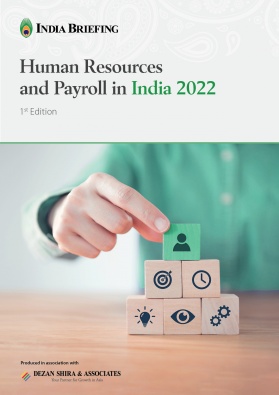Emerging Talent Trends Shaping India’s Dynamic Job Market in 2023
In this article, we explore the key talent trends shaping the India job market in 2023. From the expanding workforce and talent shortages in the skilled tier to the importance of upskilling, we delve into the factors influencing company recruitment and employee retention strategies. Additionally, we highlight India’s promising sectors for job growth. Understanding these trends is vital for businesses to stay ahead in a rapidly evolving talent landscape.
The talent market in India is experiencing significant changes, driven by global economic shifts, technological advancements, and evolving workforce expectations. Some noteworthy talent trends observed in India, as per EY’s Future of Pay Report 2023, include an expanding talent pool, shortage of skilled talent, intensified competition for top talent, upskilling and reskilling, key sectors for job growth, and retention and attrition rates.
India’s salary increase forecast for 2023 indicates positive growth despite economic changes. The median salary increases are expected to rise by 10 percent, surpassing the previous year’s increase. The survey also highlights sector-specific trends, with industries like financial services, tech media and gaming, pharmaceutical and biotechnology, chemicals, and retail expected to experience the highest salary increases.
Variable pay-outs remain an important aspect of compensation, as organizations emphasize rewarding performance through variable pay structures. While executives typically receive a significant portion of their compensation as variable pay, their projected increases for 2023 are lower compared to the previous year.
Employers are adapting their compensation and benefits strategies to prioritize employee rewards and well-being. HR policies, such as remote working options, flexible work arrangements, employee assistance programs, health and wellness initiatives, and professional development opportunities, are gaining importance in creating an engaging and supportive work environment. These attributes of an organization are becoming more important for young talents who seek better work-life balance and are invested in continuously growing their competencies.
Overall, understanding and adapting to these talent trends are crucial for businesses operating in India. By staying informed and addressing talent requirements effectively, organizations can position themselves strategically to attract and retain top talent and maintain a positive business outlook.
Insights into the top talent trends impacting the India job market in 2023
As per EY’s Future of Pay Report 2023, here are some of the noteworthy talent trends currently observed in India:
- Expanding talent pool: India possesses one of the world’s largest working-age populations, resulting in a growing talent pool. Notably, undergraduates in engineering and technology have demonstrated the highest employability rating, with approximately 55 percent. Conversely, graduates with a computer application degree have an employability rate of around 29 percent.
- Promising sectors for job growth in 2023: Several emerging sectors in India are expected to provide significant employment opportunities in 2023. These sectors include renewable energy, e-commerce, digital services, healthcare, telecommunications, educational services, retail and logistics, and financial technology. They are projected to sustain growth and offer a wide range of job prospects for qualified candidates.
- Intensified competition for top talent: With the Indian economy on a growth trajectory, competition for top talent has intensified across various industries. Companies are now placing greater emphasis on employer branding, benefits, and retention strategies to attract and retain high-quality professionals. Exceptional talent with critical skills and a track record of high performance can command compensation premiums ranging from 1.7 to 2 times that of average talent.
- Retention and attrition rates: Employee retention and business opportunities are identified as primary drivers for salary increases in India. With projected attrition rates as high as 24 percent for key talent segments, organizations need to focus not only on pay increases but also on benefits, employee experience strategies, career paths, and stress management support to retain and attract top talent.
- Shortage of skilled talent: Certain sectors, including technology, healthcare, and manufacturing, are experiencing a high demand for skilled professionals. This has led to a shortage of talent with specialized skills, thereby driving up salaries and creating more opportunities for job seekers. Sectors, such as electronics manufacturing, life sciences, healthcare, and technology, may continue to face a mismatch between the demand and supply of skilled labor in the coming years.
- Upskilling and reskilling: Given the rapidly changing job market and the disruptive impact of technology on industries, upskilling and reskilling have become essential for employees to stay relevant in their careers. In India, skills in high demand include software development, data analysis, digital marketing, and business management.
India’s salary increase forecast for 2023 reveals positive outlook amid economic changes
According to the latest Salary Budget Planning survey conducted by global advisory firm WTW, India’s median salary increases are expected to rise by 10 percent in 2023, surpassing the 9.8 percent increase witnessed in 2022. The survey examines various job grades and industry sectors, providing insights to assist companies in their compensation planning for the upcoming year.
According to the survey, salary increases in the Asia Pacific (APAC) region are anticipated to match or exceed the previous year’s figures. Among the countries surveyed, India stands out with the highest projected salary increase of 10 percent. China is expected to experience a six percent increase, Vietnam eight percent, Indonesia seven percent, while Hong Kong and Singapore are both projected to have a four percent increase. Notably, India’s salary budgets have historically surpassed inflation, suggesting a comparatively lower impact of inflation on compensation planning compared to developed markets.
Sectoral trends
The WTW survey identifies sector-specific trends, revealing that most industries are projected to witness upward salary increases in 2023. The financial services, tech media and gaming, pharmaceutical and biotechnology, chemicals, and retail sectors are expected to experience the highest salary increases at 10 percent. In contrast, the manufacturing – durable goods (9.5 percent), manufacturing – non-durable goods ( nine percent), and business process outsourcing (9.8 percent) sectors are anticipated to have salary increases below the industry median.
What are the sector-wise trends in salaries in India for 2023?
Variable pay-outs
The WTW report notes that the allocation of salary budgets to variable pay for high-performing individuals across bands remained similar to 2021. This suggests that organizations continue to emphasize rewarding performance through variable pay structures.
As per the EY Future of Pay 2023 Report, while executives (CXOs) typically receive a significant portion of their compensation as variable pay, their projected increases for 2023 are lower compared to 2022. The variable pay-outs in 2022 demonstrated a recovery across various sectors, and many organizations adjusted their pay-out plans upwards throughout the year. This trend indicates a positive sign for both employees and companies, as it suggests improving business performance and the recognition of employees’ contributions to that success.
Financial institutions exhibit the highest overall percentage of variable payout at 25.5 percent, indicating a strong emphasis on performance-based incentives within the industry. On the other hand, the telecommunications sector has a relatively lower overall variable payout percentage of 13.7 percent compared to other sectors.
Solapur emerges as India’s top city for average annual salaries, outperforming tier 1 metros
According to the recently released Average Salary Survey 2023, Solapur, a city in Maharashtra, has surpassed tier 1 cities, such as Delhi, Mumbai, Pune, Bengaluru, and Hyderabad, to achieve the highest average annual salary package in the country.
The survey, which incorporates data from 11,570 salary surveys, reports that the average annual salary in India is INR 1.89 million, with the majority of employees earning around INR 577,000. Mumbai ranks second with an average annual salary of INR 2.11 million, followed by Bengaluru with INR 2.10 million. Delhi solidifies its position as a major business and economic hub, occupying the fourth spot with an average salary of INR 2.04 million.
Other major cities, such as Pune, Hyderabad, Chennai, Kolkata, and Ahmedabad, rank lower in the list of approximately 54 cities. The survey further delves into average annual salaries based on factors, such as gender, age, education, experience, profession, and designation.
The survey also highlights the dominance of certain states in terms of average annual salaries, with Uttar Pradesh taking the lead followed closely by West Bengal.
Finally, the survey highlights the highest-paid careers, with management and business professionals earning an average annual income of INR 2.95 million, while those in the law field earn INR 2.7 million. Individuals with a Doctorate degree receive the highest average annual salary of INR 2.75 million, followed by those with a Master’s degree earning INR 2.12 million. Experience and educational qualifications also play a significant role in determining salary levels, as employees with more years of experience and higher educational qualifications tend to earn higher incomes.
Trends shaping employee compensation and benefits in 2023
As the workplace evolves, employers are adapting their compensation and benefits strategies to prioritize employee rewards and well-being. Below are the key emerging trends shaping employee compensation and benefits structure:
- Remote working options: The COVID-19 pandemic has accelerated the adoption of remote work arrangements. Employers are now offering remote working options to enhance work-life balance and improve employee satisfaction. Remote work provides flexibility and allows employees to save time and costs associated with commuting.
- Flexible work arrangements: Flexible work arrangements, such as flexible scheduling and compressed workweeks, are gaining popularity. Employers understand the importance of work-life balance and are implementing policies that allow employees to adjust their work schedules to better accommodate personal commitments.
- Real-time recognition: Real-time recognition has gained popularity as a way to boost employee morale and motivation. Companies are adopting peer-to-peer recognition platforms and social recognition tools to provide immediate feedback and praise for employees’ achievements. This trend is expected to grow in 2023.
- Employee choice: Giving employees more control over their rewards and recognition is becoming a key trend. Companies are implementing employee choice programs, such as rewards catalogs or points-based systems, that allow employees to choose the rewards that align with their preferences and values.
- Increased use of technology: Technology is playing a crucial role in enhancing rewards and recognition programs. Companies are leveraging gamification platforms, mobile apps, and data analytics to create more engaging and effective programs. The adoption of technology-driven solutions is set to increase in 2023.
- Employee assistance programs: Employee assistance programs (EAPs) are being prioritized to support employees’ mental health and well-being. EAPs provide confidential counseling services, resources for managing stress, and assistance with personal and professional challenges. Employers recognize the value of supporting employees holistically.
- Health and wellness programs: Employers are investing in comprehensive health and wellness programs to promote employee well-being. These programs may include physical fitness initiatives, mental health support, nutritional guidance, and access to wellness resources. By prioritizing employee health, employers aim to improve productivity and reduce absenteeism.
- Professional development opportunities: Employers are placing increased emphasis on professional development opportunities to foster employee growth and career advancement. They offer training programs, workshops, and mentorship initiatives to enhance employees’ skills and knowledge. Investing in professional development demonstrates a commitment to employee success.
About Us
India Briefing is produced by Dezan Shira & Associates. The firm assists foreign investors throughout Asia from offices across the world, including in Delhi and Mumbai. Readers may write to india@dezshira.com for more support on doing business in India.
We also maintain offices or have alliance partners assisting foreign investors in Indonesia, Singapore, Vietnam, Philippines, Malaysia, Thailand, Italy, Germany, and the United States, in addition to practices in Bangladesh and Russia.
- Previous Article India’s 50th GST Council Meeting July 2023: Key Outcomes for Businesses
- Next Article India, UAE Agreements on Currency Settlement, Payment Systems, and Key Sector Collaboration











